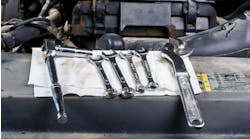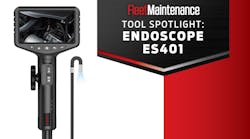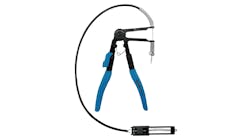Your customer’s tires are one of the most important safety features on their vehicle, and as such, require regular inspection. As technicians, we know that the typical tire has 8/32” of actual tread life. Once the remaining tread reaches 2/32” the tire is no longer safe for use. What we don’t fully know is the rate at which the tread is worn. Customer driving habits, road conditions, type of tire, and the vehicle itself all make predicting how long a tire will last difficult. Also, we do know that remaining tread has a direct impact on vehicle stopping distance. Having your customers understand where their tires are in terms of this important safety feature is very important!
This is where regular and routine inspection comes in. An industry best practice is to measure the remaining tread life of your customer’s tire at each vehicle service. Regardless of the frequency, measuring remaining tread at each service, and recording the vehicle mileage as well, will allow you to chart your customer’s tread usage. This is a critical step in providing great customer service while helping your customer understand the importance of monitoring tire wire. Properly and accurately measuring remaining tread depth at every customer visit will help predict when a new set of tires will be needed. This information can also be useful when the consumer is making the tire purchasing decision [i.e. what kind of tires to buy based on driving habits].
Over the years, it has been a common practice for a technician to reach in their pocket for some change when measuring tread depth. Since it’s difficult to really quantify a reading from a penny or a quarter, it’s recommended to use something a bit more accurate. Stick gauges will provide a measurement but can be prone to misreads. The best practice is the use of a digital tread depth gauge. Accurate measurement, along with a way to record the data, is a necessary part of this process. A digital gauge is much easier to read and capable of very accurate readings. When measuring remaining tread, always take readings at multiple points within the measuring zone.
The benefits of a digital measuring and reporting system are many. First, the digital gauge is very accurate and can collect readings from multiple points within the measuring zone. This is helpful in showing a wear pattern, in addition to remaining tread. Secondly, digital gauges produce information that can be sent wirelessly to a PC, workstation, or a tablet. Ultimately, the information recorded at the tire inspection point can be used to create an inspection report. This inspection report is the key to having an informative conversation with your customer. The format of the inspection report is key; red indicators mean [it’s] time to replace or faulty wear; green indicators mean a good result. In any case, this report becomes part of your customer’s profile and a key talking point every time they visit your shop. Accurate tire inspection, along with sound record keeping and reporting, will help maintain the safety of your customer’s vehicle and it will help sell more tires along the way too!
Information Provided By: Bartec USA


